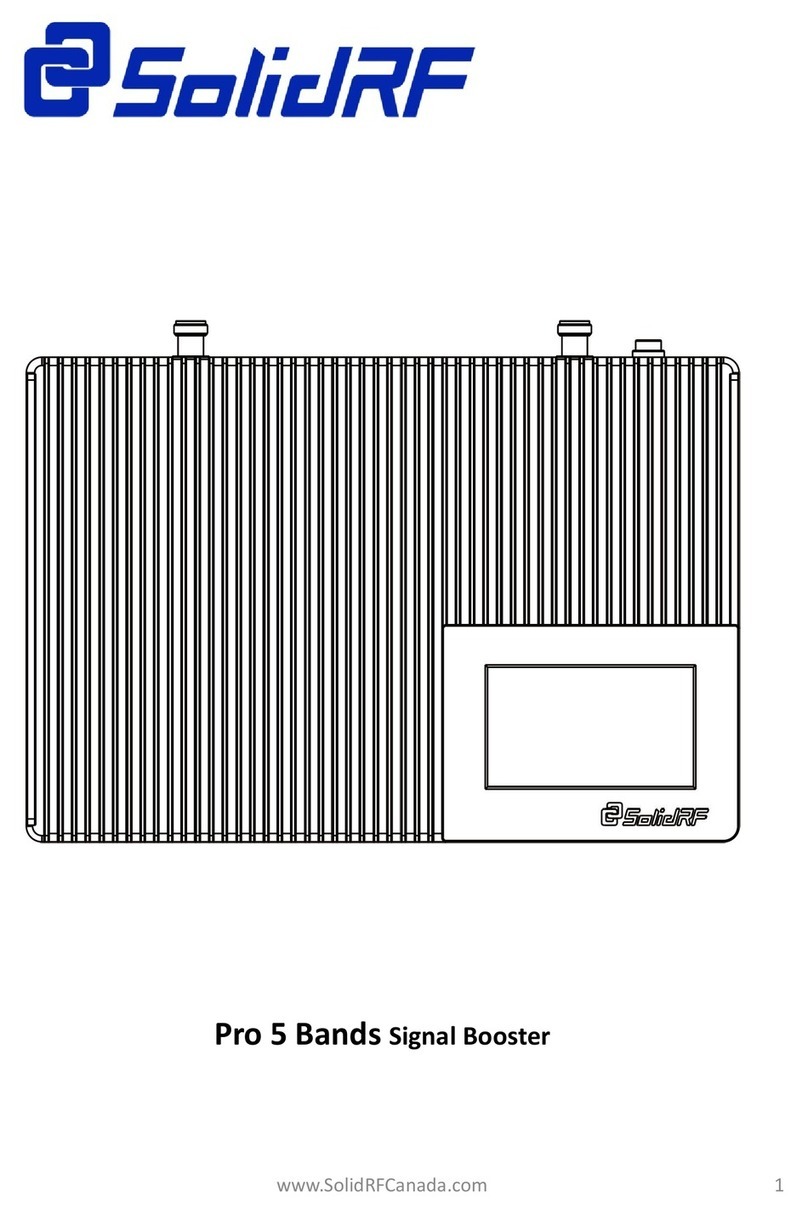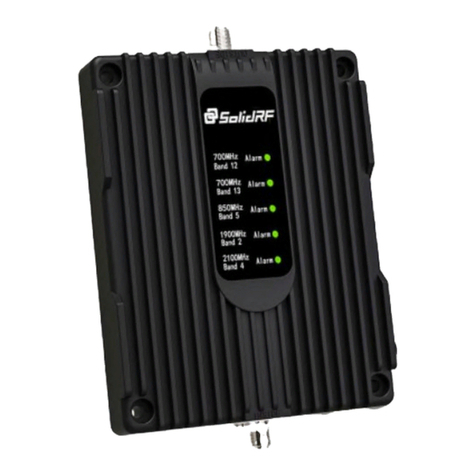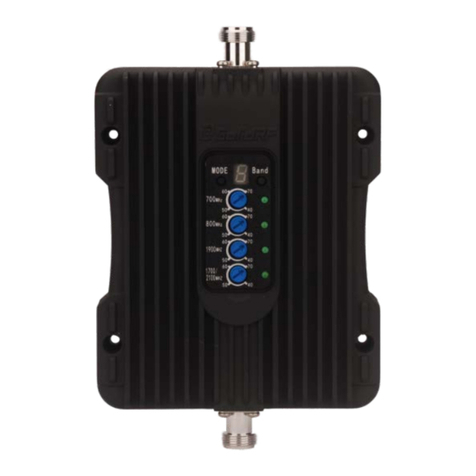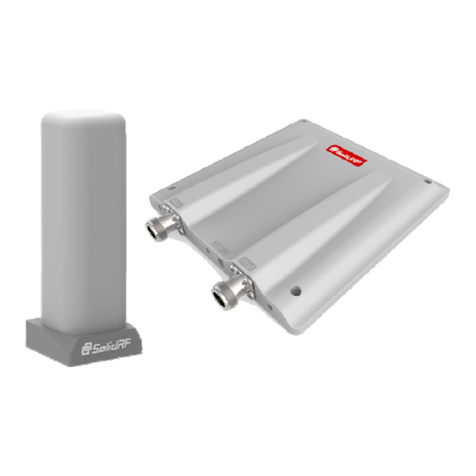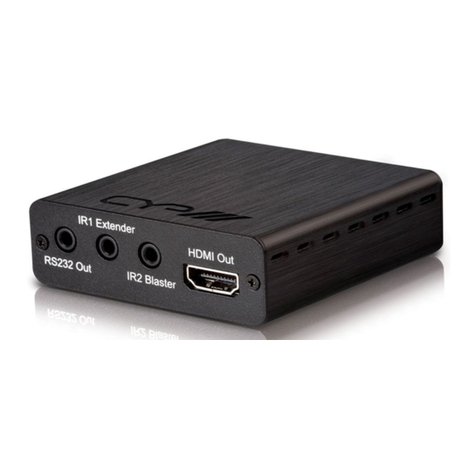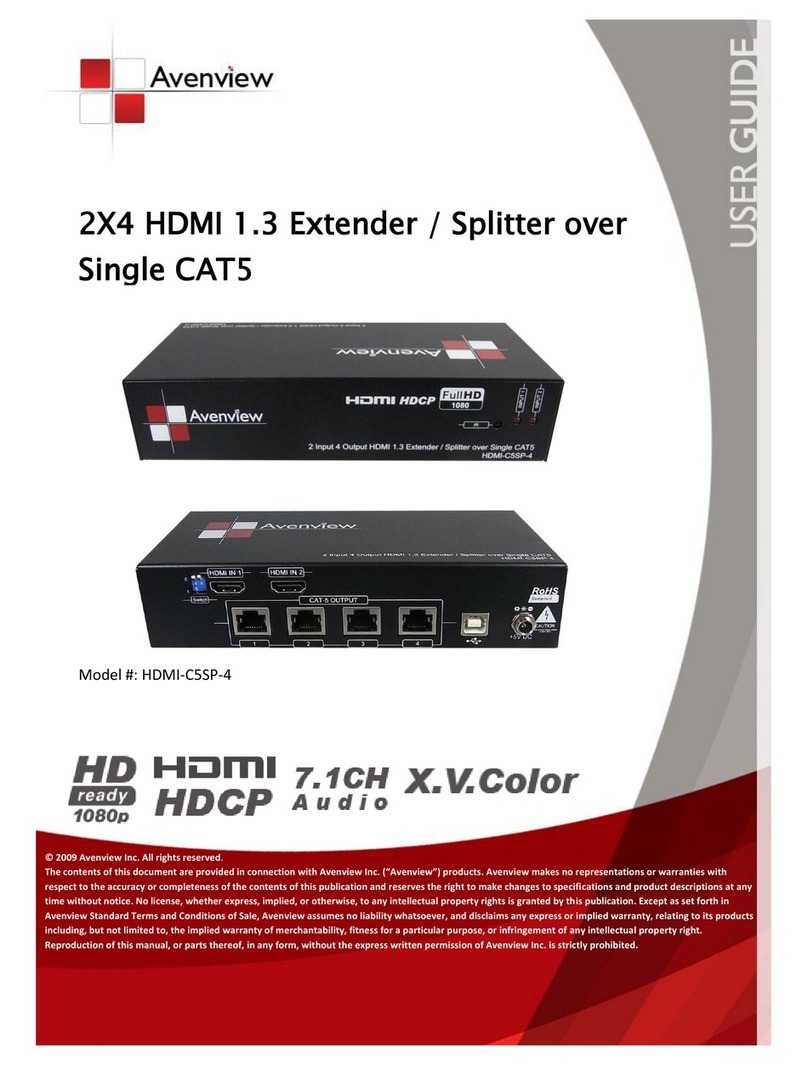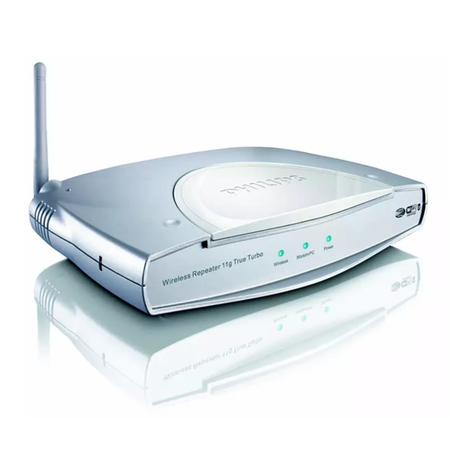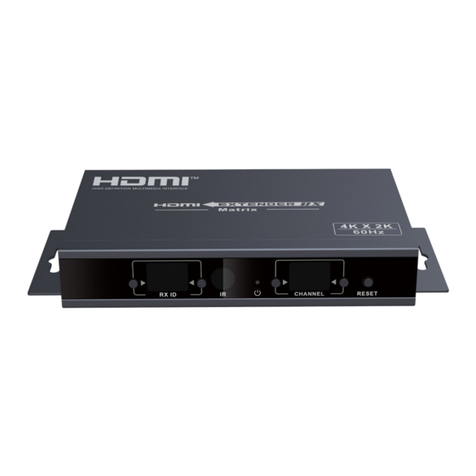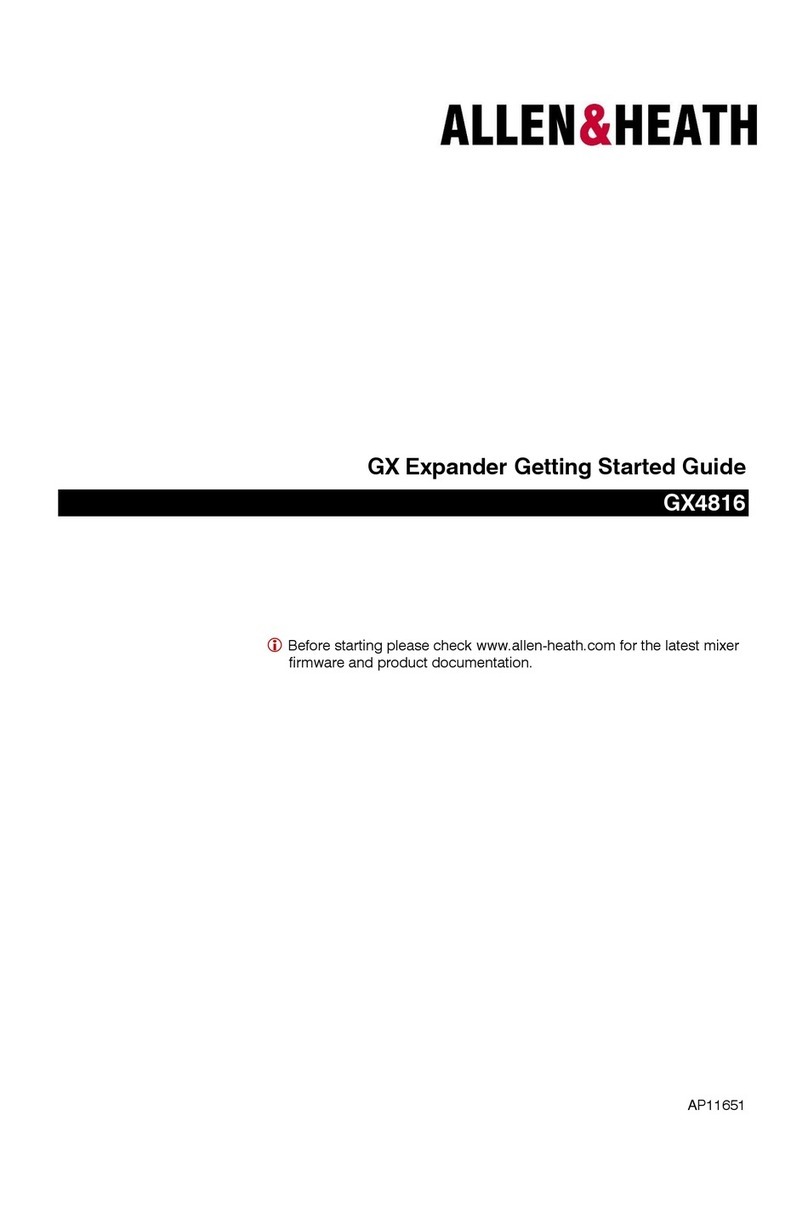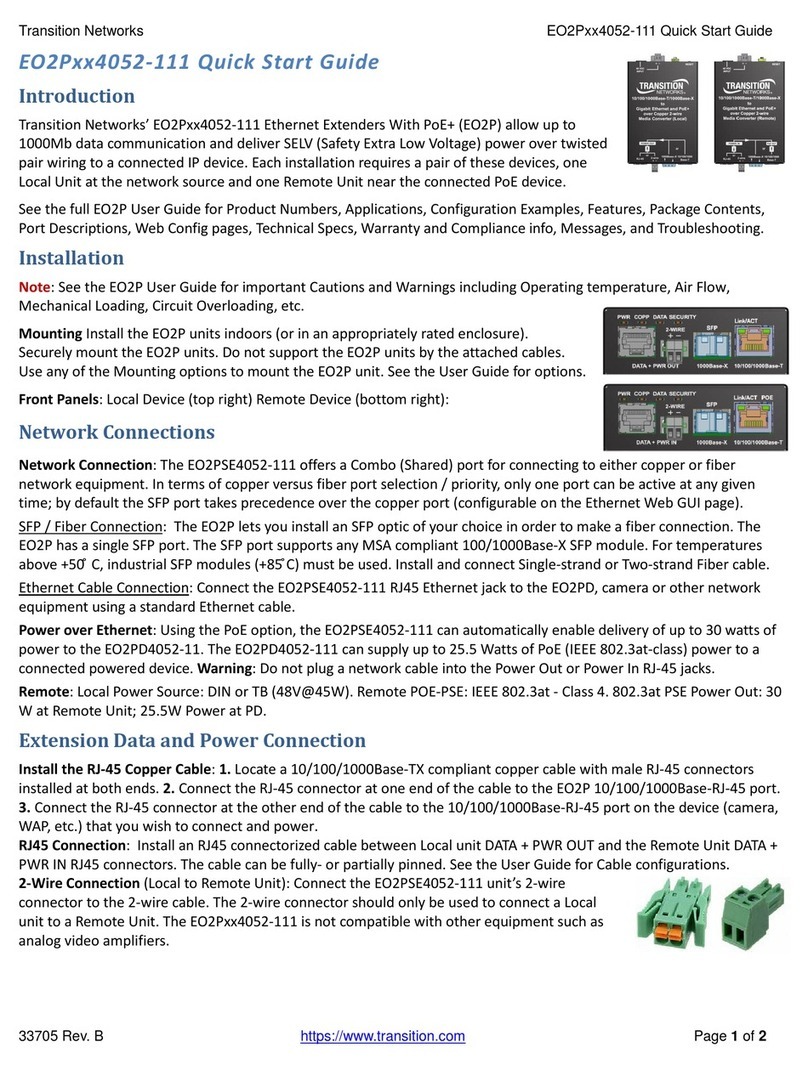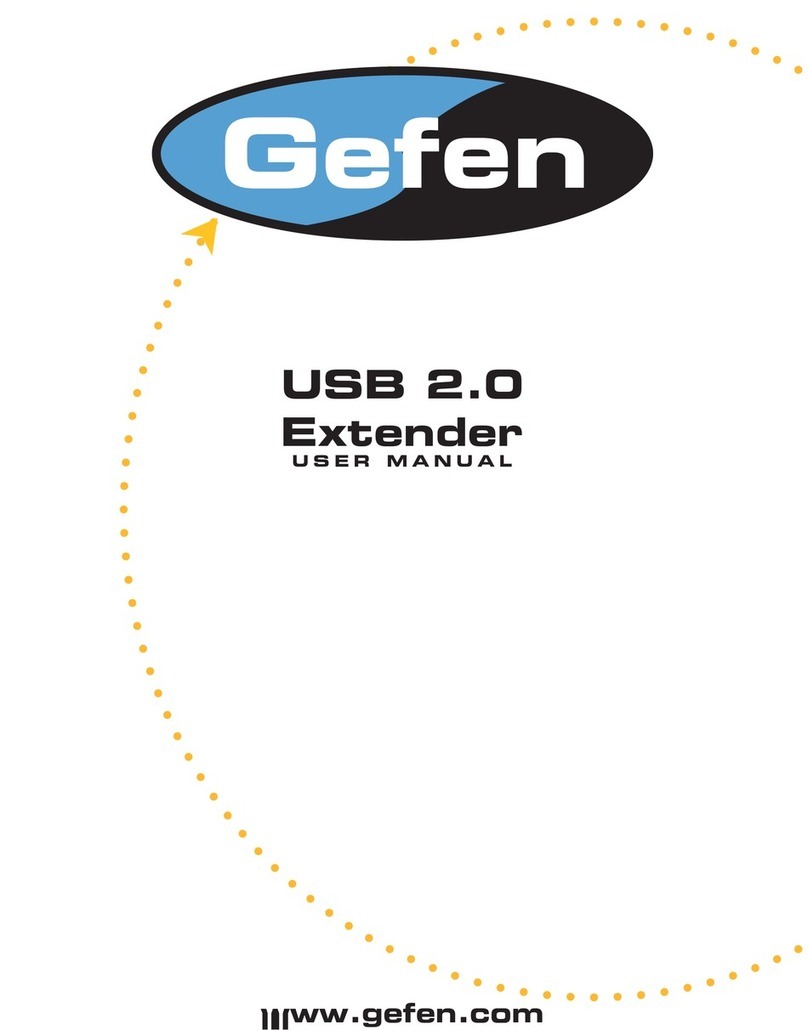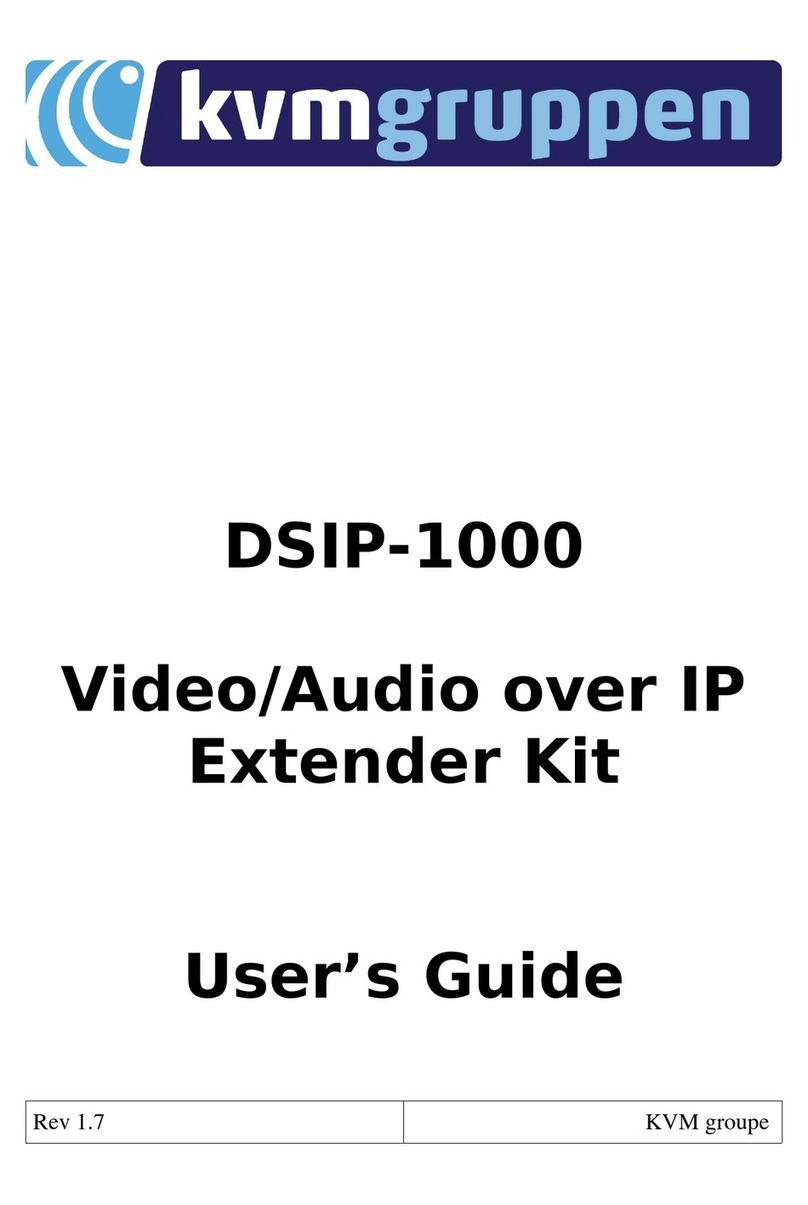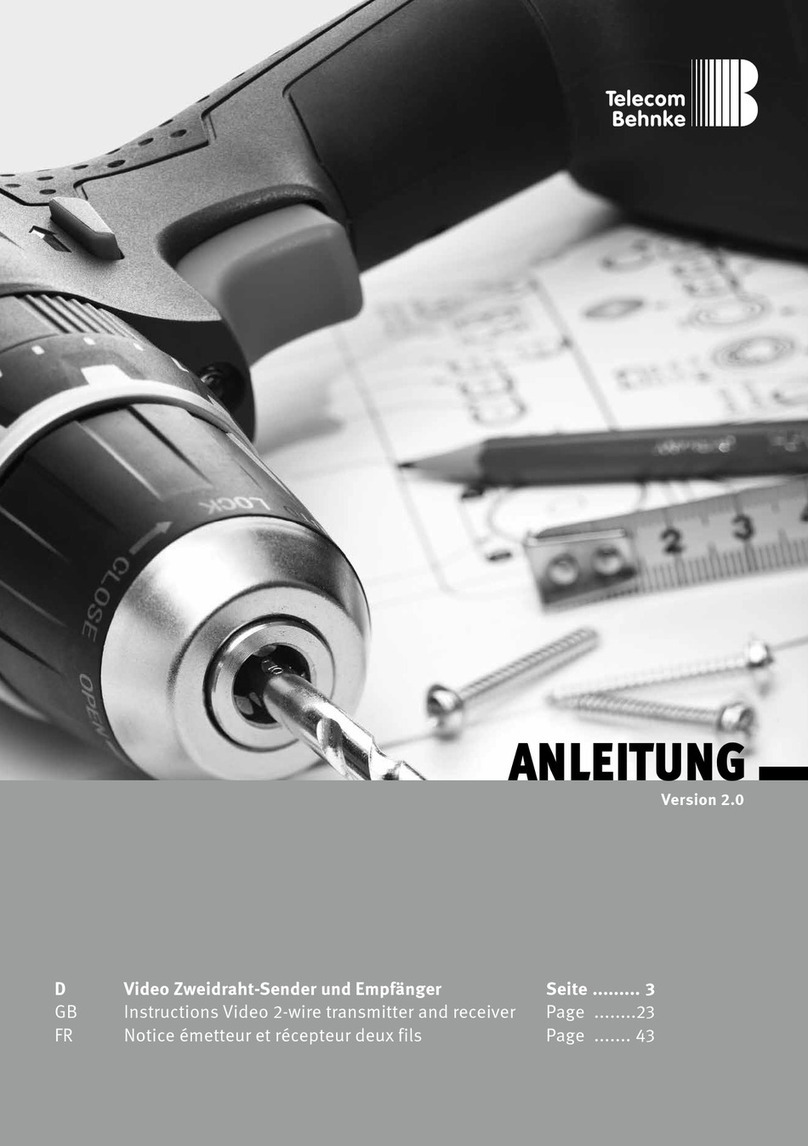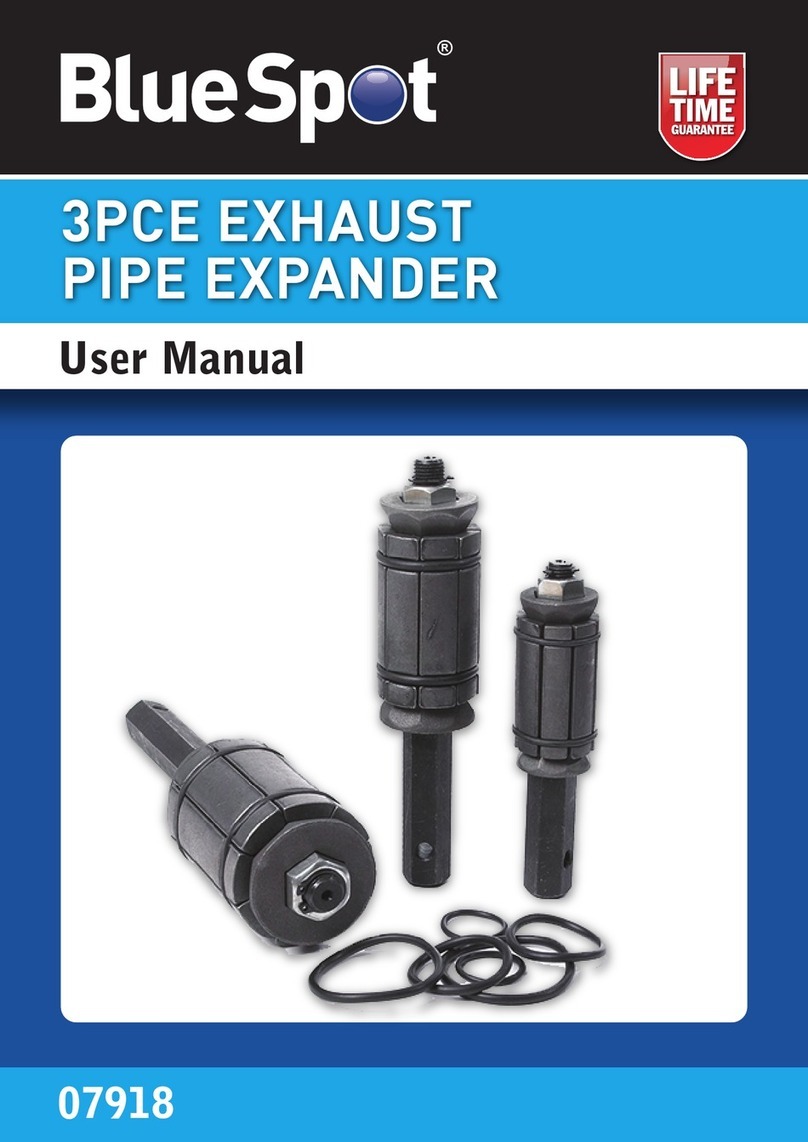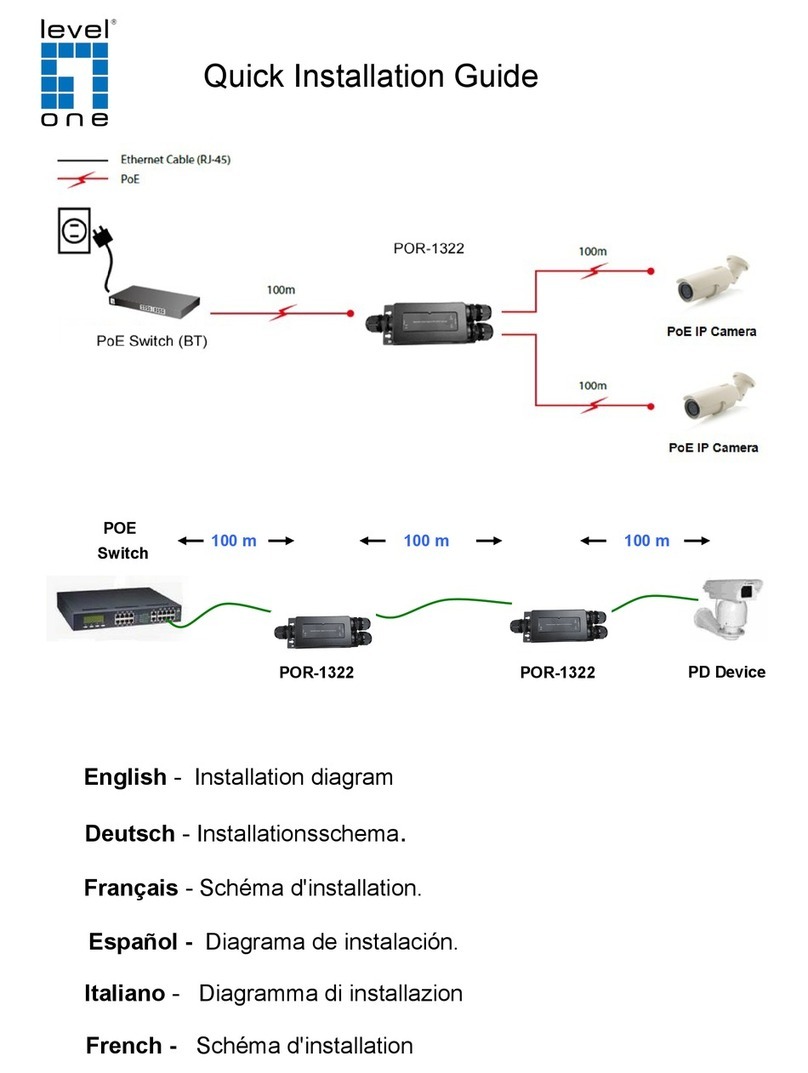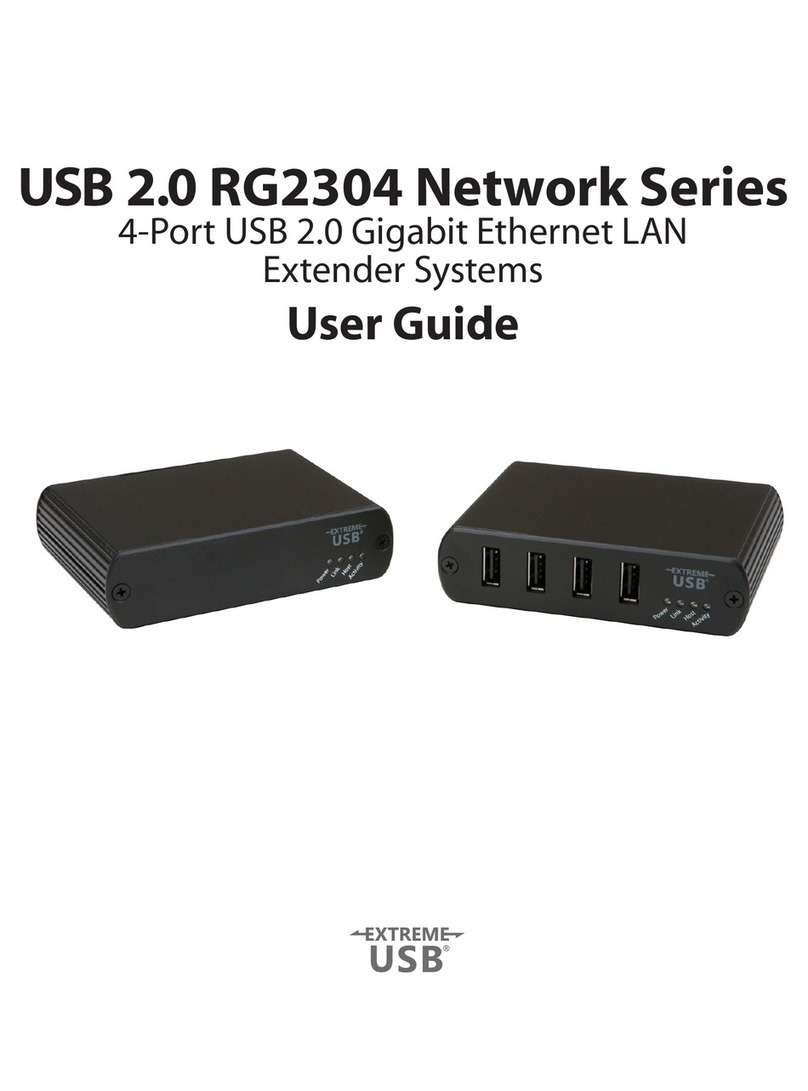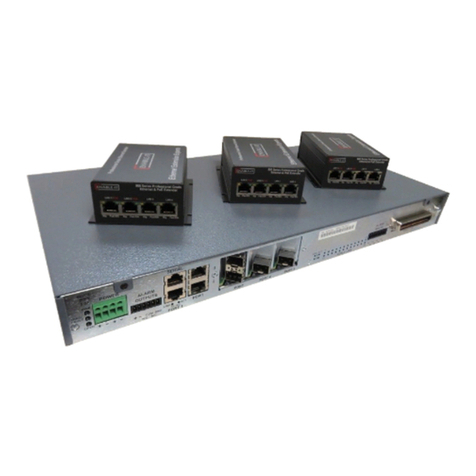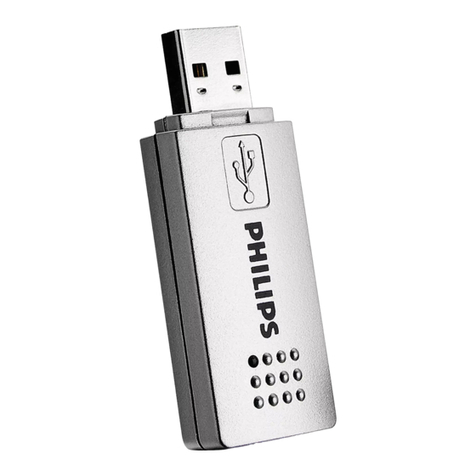SolidRF E2 User manual

SolidRF E2
Cell Phone Signal Booster
Manual
1
Operational Diagram
(How It Works)
Package Contents
Page 2
Installation Step By Step
Page 8 - 16
Trouble Shooting
Page 17 - 26
Technical Specification
Warranty Information
Page 27
Basic Signal Level
Knowledge
Page 3
Preparation
Page 4 - 7
Safety Guidelines
Page 28

Working Diagram (How It Works)
Package Contents
1. The outdoor antenna catches the signal from the tower.
2. Sends outside signal to the booster through a coax cable.
3. The booster amplifies the signal then rebroadcasts the signal indoors to all mobile
devices within range.
4. The system also works in reverse; amplifying outgoing signal back to the tower.
The kit includes the following items:
1. Outdoor Antenna (with mounting kits);
2. Booster(with indoor antenna);
3. Power supply;
4. 60 ft of RG6 cable, for connecting the outdoor unit and indoor unit;
The coverage area and the strength of the boosted signal are directly related
to two key factors:
1. Signal strength received by the outdoor unit. So, setting up the outside unit
where the signal is the strongest will provide the best results.
2. Distance of separation between the outdoor unit and the indoor unit.
2
Outdoor Antenna
Booster & Indoor Antenna
Power supply
RG6 cable

Signal transmission loss and power level
Power level
at the outdoor antenna location
Coverage Area
(sq. ft.)
Strong (5 bars on the cellphone)
2,000
Medium (3~4 bars on the cellphone)
1,000
Weak (1~2 bars on the cellphone)
300
Coverage area ability
3
Note: FCC regulations limit the amplification of all cell phone boosters in order to prevent
damage to the telecommunications infrastructure. Therefore, the maximum coverage area of
a booster depends on the original power level of the signal captured by the outdoor unit.
Notice: Not recommended when outdoor signal strength is less than -110dbm(3G/1x)
or -120dBm(4G/LTE). The resulting coverage area of the boosted signal will be
prohibitively small.

Find your cell tower nearby!
There are a variety of resources available online, here is a third party website
recommended. Use it to locate your nearest cell tower: www.cellmapper.net
Preparation
Note: This is very important step. If we use the wrong direction, we
won't have good result.
Step 1: Visit website www.cellmapper.net
Step 2: Find your location on the map and zoom in on your area
4
www.cellmapper.net

Step 3:. Select Provider. You will find the cell tower around your
house.
5
Select Provider

Step 4: Find your cell tower
Click the red or green dot on the map that represents the base station, and the detailed
information of the base station will be displayed.
•The first important information, you can see from the above four pictures, the coverage
area (shaded part) of each base station is different. You have to find a base station with
signal coverage to your house, or the coverage direction is facing you, and the coverage
area is closest to you.
•The second important information,
you can scroll the information
content on the left to find the
specific carrier information of this
base station, including the
communication standard and
frequency band. Please reference
the left picture, “LTE” and “B2
FDD”(Band 2, FDD).
6

Find The dBm Reading and Band Number On Your Phone
Having an accurate measurement of signal strength in decibels (dBm) is crucial when
installing your system. Decibels accurately measure the signal strength you are receiving.
Note: Turn off your cell phone’s WiFi to ensure you are checking the cellular connection.
The dBm reading will be refreshed every 30-60 seconds. Want faster results? Once you
have a reading, turn on airplane mode. Wait 15 seconds. Turn off airplane mode. The signal
strength reading is refreshed.
iPhone: dial *3001#12345#* then press call
Android:download third part APP-LTE Discovery
Band number
Receive level dBm
Receive level dBm
Band number
7

Step1: Select the Location for the Outside Unit
Note:This is the most critical step and will determine the overall performance of the
booster system.
1. Generally, the strongest signal will be located on the side of your home facing the
nearest cell tower. Keep in mind, the signal strength at ground level may be different
from the signal strength at or above the roofline due to obstructions (trees, other
buildings, etc.) that block the incoming signal. In most situations, the strongest
signal is found about 25 feet above the ground on the side of your home facing the
nearest cell tower.
2. The most ideal installation position is the corner of the building, choose the one
facing your cell tower.
8
Four corner of the building are the most ideal position
Choose the one facing your cell tower
Test Installation
We STRONGLY recommend doing a test installation before finalizing the installation.
Doing a test installation of your cell phone booster ensures that you will get the optimal
performance from your system.

Step 2: Temporarily Mount the Outside Antenna
In addition to the four corners of the building, the chimney and the pole above the roof can
also be selected. As long as the installation distance between indoor and outdoor antennas
is maintained enough, satisfactory results can also be achieved.
Use one of the three options to mount the outside antenna on your roof on the side of the
house with the strongest signal.
The height of the outside antenna should never exceed the highest point of your house.
This is a precaution against damage and safety concerns caused by lightning strikes to the
outside unit.
9
Caution
Trees will greatly attenuate wireless signals. If there are tall trees within 100 feet of the
house. At the same time you can't find a stable signal above 3 bars, the outdoor antenna
needs to be erected 60%(at least) to 80%(best) of the tree height. Never exceed the trees!
But according to FCC
regulations, outdoor
antenna height cannot
exceed 30 feet.
At the same time, if the
antenna exceeds the roof,
please pay attention to
lightning protection
measures.
Outdoor antenna must be installed over the roof line.

Step3: Select the Location for the Inside Antenna
Measure the Signal Strength Inside your Home
•Test your current signal strength in multiple locations throughout the home
•Record the current signal strength in the table provided for reference
Test Record
No
Location
Record(dBm)
1
2
3
In order to achieve the best signal coverage
effect, there is a certain distance requirement
between the indoor and outdoor units. Make
sure the inside and outside units are facing away
from each other.
Top view of antenna beam shape and energy distribution
•For the outdoor antenna:
1. The front radiation main beam angle is about 90 degrees;
2. There is a very less energy radiation area behind the antenna, which we call it
“blind area”. The angle of the blind area is about 60 degrees;
•For the indoor antenna: The radiation beam is omnidirectional, the energy is evenly
distributed in the direction of 360 degrees.
Minimum Required Separation Distance
Between Indoor and Outdoor Antenna:
Straight line distance over 30 feet(10 meters)
or
20 ft (6 meters) horizontal distance
13 ft (4 meters) vertical distance(As far as possible)
10
Front Rear
Outdoor antenna Indoor antenna

11
Antenna mutual position( top view)
Do not face the outdoor antenna to the
indoor antenna.
Ensure the distance, indoor antenna outside
of blind area but it's at rear side of the
outdoor antenna( good solution).
Ensure the distance, keep indoor antenna in
the blind area( the best solution).
Do not set the indoor antenna at the front
side of the outdoor antenna.
The indoor antenna is an
omnidirectional antenna.
Choosing a location in the middle
of your home will help maximize
coverage.

12
3. Connect the indoor antenna to the
“INSIDE” port on the booster.
4. Plug in the power adaptor and connect it
to the nearest power outlet.
2. Connect the cable to “OUTSIDE” port
on the booste.
Correct Panel Lights - Self-test
The indicator light indicates the status of the booster. Every time the booster is turned on,
the indicator will turn orange for about 1 second and then go green. This means that the
booster has passed the self-test and is in good condition. If you can see any flash or solid
orange, that means the separation is not enough or the outdoor antenna is facing the
indoor antenna. Please go to “Trouble Shooting” on page 17 for detail information.
Power On Flash once time Solid green
Step4: Connect the System
1. Connect the outside antenna to the 60 feet
RG6 cable, Secure the cable near the antenna.
Secure the cable near the
antenna to prevent cable
damage caused by wind
shaking

Step5: Evaluate the Effects
Test Record
Note: Decibel Gain and Power Amplification may vary depending on the specifics of your
situation. Different building materials and other obstructions in your home will result in
different outcomes.
13
•Now that the booster is up-and-running, re-test the signal strength inside your home at
the same locations from Step 1. If the number is higher (dBm reading is closer to zero)
than the original reading, your booster is working.
•If your signal is not stronger, check the LED lights on the booster and refer to the
“Trouble Shooting” on page 17 for detail information.
At a distance of 6 feet from the indoor antenna, test the
signal strength without obstruction. If this test result is
15~20db higher than your test result at the outdoor antenna
position, then your system has reached the best effect.
For example, you test a signal of -90dbm at 6 feet away from
the indoor antenna. Your outside antenna position record is -
105dbm. So the improvement is:
-90dbm - (-105dbm) = 15db
If your results do not reach this range, please go to “Trouble
Shooting - No Improvement” on page 24 for detail
information.
How to visually confirm that your installation is effective and correct?
Note1: In daily life, the signal dbm readings of our mobile phones range from -70dbm to
-120dbm. Because it is a negative number, the smaller the number, the greater the signal
strength.
Note2: In the case of no problems with the installation, the strength of the indoor signal
depends entirely on the strength of the outdoor signal.
6 feet
No
Location
Record(dBm)
1
2
3

Option B : Mounting on the side of
the chimney(Second Choice).
Step6: Finalizing Outdoor Antenna Installation
Outdoor Antenna Installation
Make sure that the outside unit is mounted at least 3 feet away from any windows.
Option A : Outside Roof Pole Mount
(Best Choice) Use an existing pole to
mount the outdoor unit in the optimal
signal location. Use the picture for
reference.
Once you have tested the performance of the signal booster and made all necessary
adjustments, it’s time to finalize the installation.
14
In particular, cables for outdoor antenna locations
must be fixed. Otherwise, the internal wires of the
cable will be pulled off after the wind has been shaken
for a long time. The amplifier will not receive the
signal and the system will fail completely.
As shown in the figure, it is best to have the cable
around a single turn shape and then fix it.
Long-term rain or moisture erosion
can damage the electrical
characteristics of outdoor antenna
connectors. Make sure connectors are
well screwed in and seal the
connectors with glued tape.
Secure the cable to
prevent cable
damage caused by
wind shaking
Seal and Fix the Connector

Step8: Finalizing and Securing Cable Route
•Find the best route for the cable.
Follow the lines of your home to
hide the cable in eaves or
between the soffit and the
exterior wall.
•If needed, cable clips can be
purchased at most hardware
stores.
15
Booster will about 30 degrees Fahrenheit higher than the ambient
temperature, which is a normal phenomenon.
Step7: Finalizing Indoor Installation
•Whether the cable is properly
secured is very important for the
entire system. In most cases, the
customer found that the booster did
not work after working for a period
of time because the cable was not
installed securely.
•Carefully arrange the cable along
the outside of the building and
ensure that there are no folds or
kinks. Fix the cable at each corner.
2. Mount the booster
•Choose a ventilated and dry place
•Keep away from heat
•Don't cover booster
1. Choose right position for the indoor antenna
•1 feet away from any other metallic objects
•3 feet away from any windows
On the table
On the wall

16
Make sure these excess coiled cables are more than 6 feet(2 meters) from the antenna or
booster can make your system work more stable.
If the coiled cable is too close to the antenna or booster, the system will be unstable.
Make sure these coiled cables are more than 6 feet(2 meters) from the antenna or
booster
Properly Handle Excess Cables
Caution
Secure the cable near the
antenna to prevent cable
damage caused by wind
shaking
Seal and Fix the Connector
≥6 feet
≥6 feet

17
Trouble Shooting: Normal Working Status Indicator
Trouble Shooting: No Power Light On
DC Power Indicator Correct functioning:
•Status Light should be solid green after powered on.
The LED will light up
after power on.
Power Light & Status Light
DC Power Indicator Off
•Please check your outlet,
make sure it is normal;
•Contact us through email or
phone call for replacement;

Every 3dB lower, the power level go down 50%. Every 6dB lower the power level
go down 75%, the coverage radius go down 50%.
The panel indicator is flashing or solid on:
1. Booster has CPU inside, it will do the
“Oscillation” test every time after power on.
When it detect the Oscillation is happening, it
will lower the gain of the relative band 1dB.
And then test again, see if the oscillation is
cancelled. If not it will lowered the gain 1dB
again. This cycle will continue.
18
Trouble Shooting: Panel Lights Flash or Solid Orange
2. If the gain of the band is lowered by CPU between 1~15dB, and the oscillate
stopped. The indicator will flash 1~15 times for 2 cycles.
3. If the gain of the band is lowered by CPU between 16~25dB, and the oscillate
stopped. The indicator will flash all the time.
4. If the CPU can not eliminate the oscillation after reducing the gain by 25dB, it will
shut down the corresponding band to stop the oscillation. The status light will solid
orange.
Indicator Status
Gain lowered
What to do?
Flash 1 to 15
times( 2 cycle)
1~15 dB
If your coverage is good and reception is good, you
can ignore the flash.
Flash all the time
15~25 dB
Check and install the whole system again.
Solid orange
shut down
Check and install the whole system again.
Meaning of indicator light
Microphone
Speaker
Have you ever had the experience of putting the
microphone in front of the speaker and you'll
hear a loud noise?
1. Microphone receive sound which from the
speaker, and then send the sound to speaker;
2. Speaker boost the sound then broadcast the
bigger sound to microphone again;
3. The sound gets louder and louder, and
eventually it becomes noise.
Basic Oscillation Knowledge

Step 1: Keep enough distance between
indoor and outdoor antennas
Minimum Required Separation Distance
Between Indoor and Outdoor Antenna:
Straight line distance over 30 feet(10 meters)
or
20 ft (6 meters) horizontal distance
13 ft (4 meters) vertical distance(As far as
possible)
How does oscillation happened:
1. Indoor antenna receive leak signal from the outdoor antenna;
2. Booster amplify the signal and then transmit it to the outdoor antenna;
3. Outdoor antenna broadcast the signal in the air, some of the signal back to indoor
antenna become leak signal;
4. If the gain of the booster higher than the loss of the leak signal, the leak signal will
become bigger and bigger, finally oscillation happened.
19
Leak Signal
Boosted Signal
Trouble Shooting: How to solve the problem of oscillation
1. Status light flash or solid orange after power on;
2. Screw off the indoor antenna from the booster;
3. Restart the power supply;
4. The status light solid in green color.
Such a situation means your system has oscillation problem.
Trouble Shooting: How to confirm that oscillation has
occurred

20
Step 3: Keep indoor antenna in the “blind area” of the outdoor antenna
1. The front radiation main beam angle is about 90 degrees;
2. There is a very less energy radiation area behind the antenna, which we call it
“blind area”. The angle of the blind area is about 60 degrees;
Top view(horizontal) of outdoor antenna
Front Rear
Outdoor antenna
If you have oscillating issue, at the same time, due to the structure or size of the house,
your installation can not keep enough distance between indoor and outdoor antenna.
Please setup your indoor antenna in the “blind area”, that will increase the isolation
greatly. Effectively solve the problem of oscillation.
When you do this, your outdoor antenna may not right facing the cell tower. That is fine.
Please understand that any direction in the main beam area will be the same reception.
Remember, the antenna's forward horizontal main beam is about 90 degrees.
Step 2: Outdoor antenna must
be installed over the roof line
The roof can block the signal
coupling between the indoor and
outdoor antennas, improve the
stability of the system. Installing
the outdoor antenna above the
roof can form a large isolation
area between the two antennas.
Greatly reduce the signal leakage
between the two antennas.
Table of contents
Other SolidRF Extender manuals
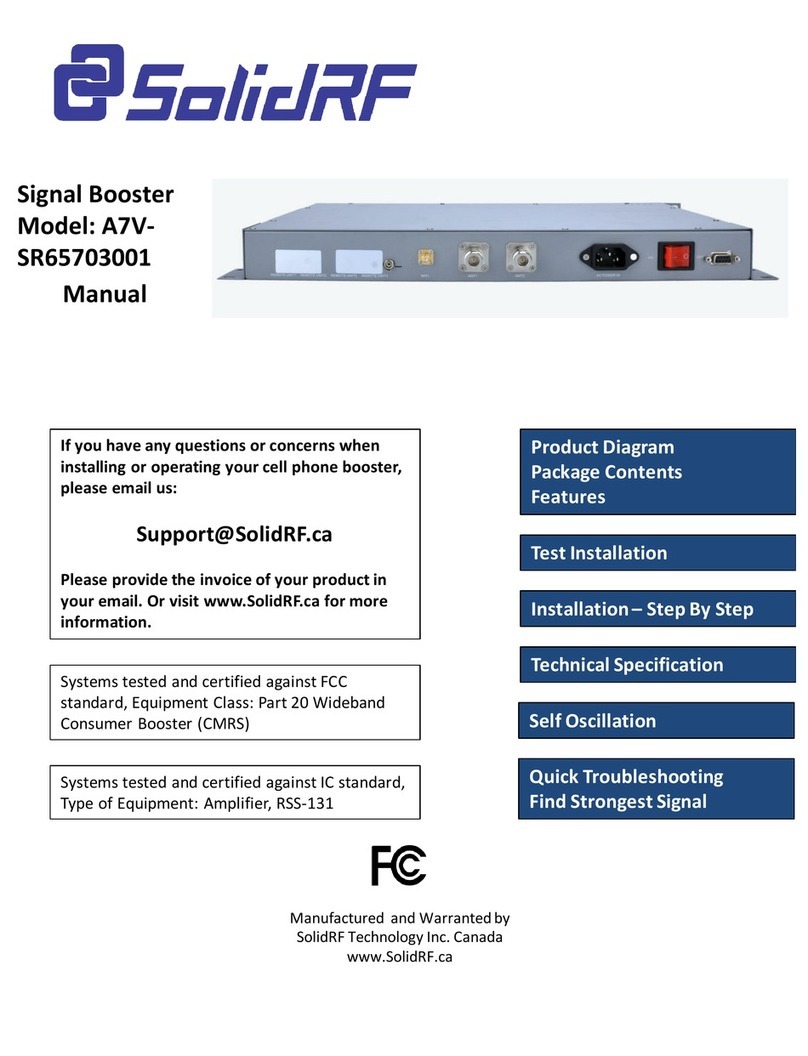
SolidRF
SolidRF A7V-SR65703001 User manual
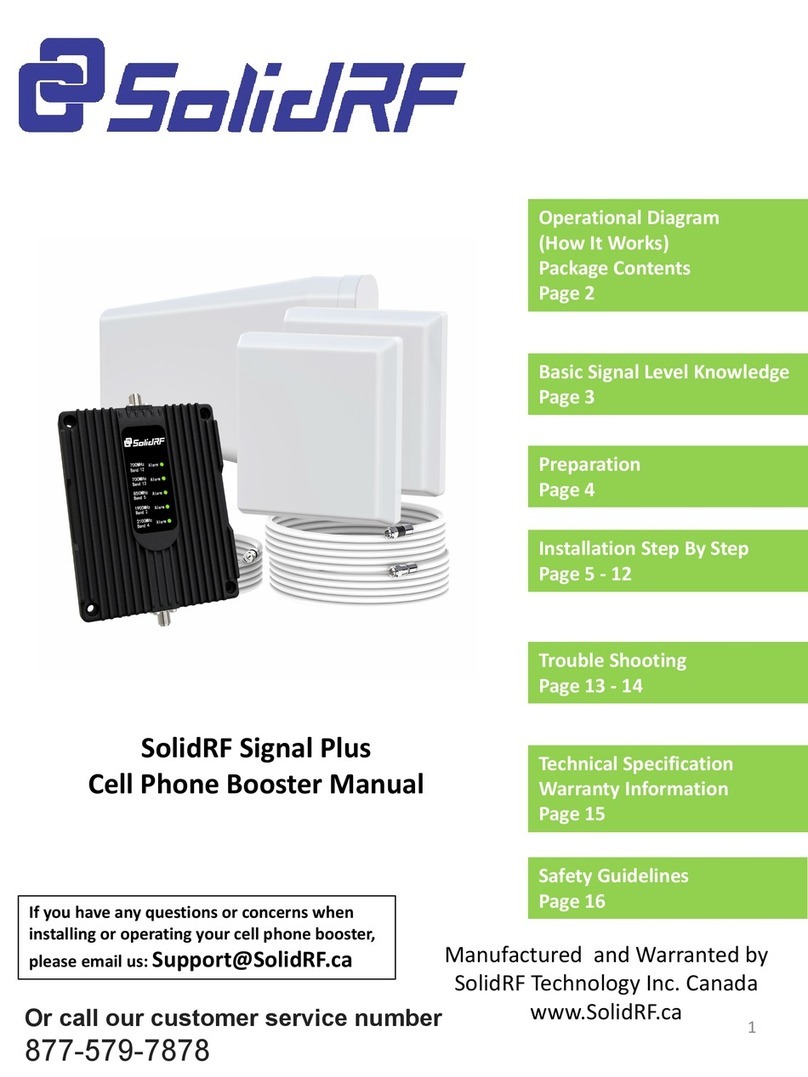
SolidRF
SolidRF Signal Plus User manual
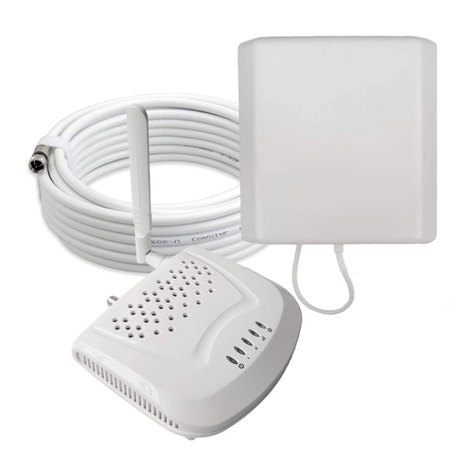
SolidRF
SolidRF SOHO Dual Bands User manual
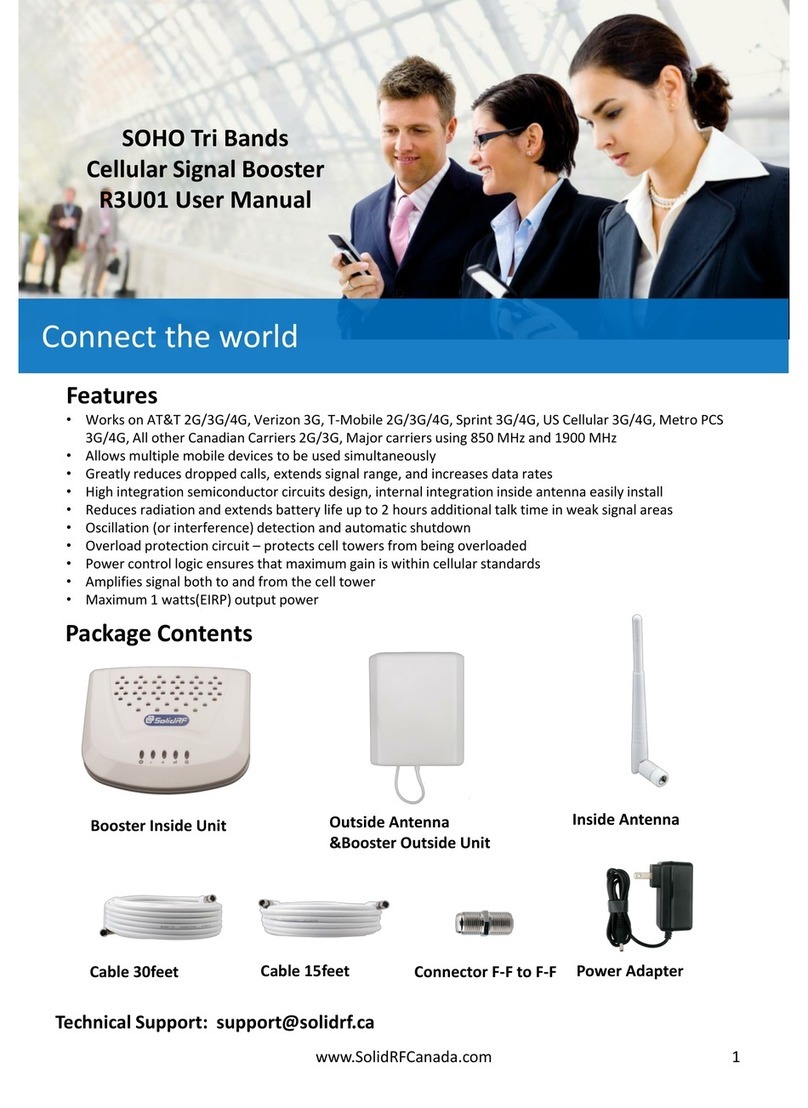
SolidRF
SolidRF Soho Tri Bands R3U01 User manual
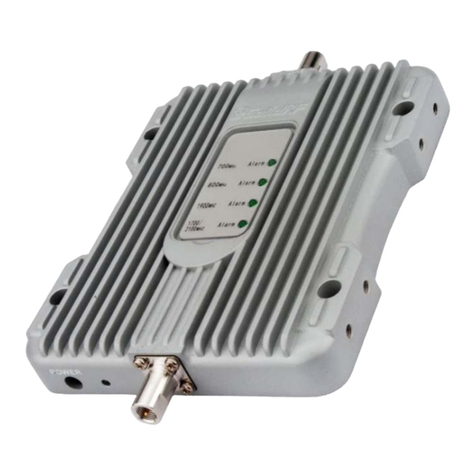
SolidRF
SolidRF MobileForce 4G User manual

SolidRF
SolidRF SR14652002A User manual

SolidRF
SolidRF M5U01 User manual
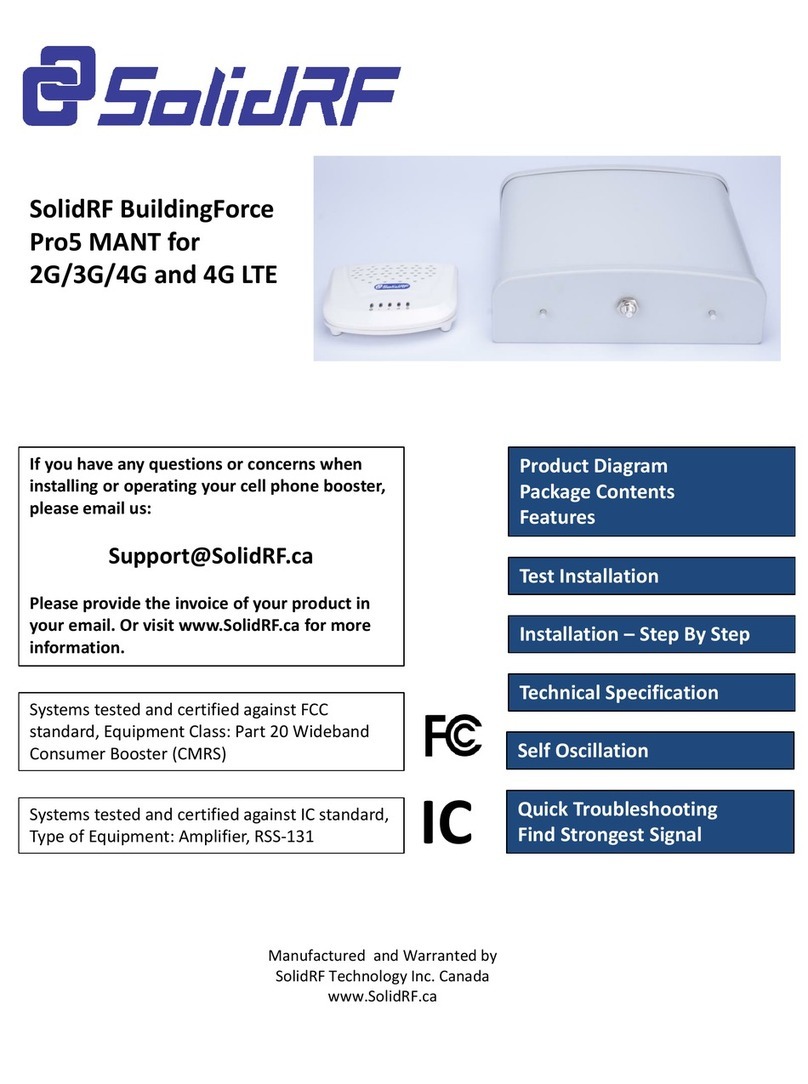
SolidRF
SolidRF Building Force Pro5 MANT User manual
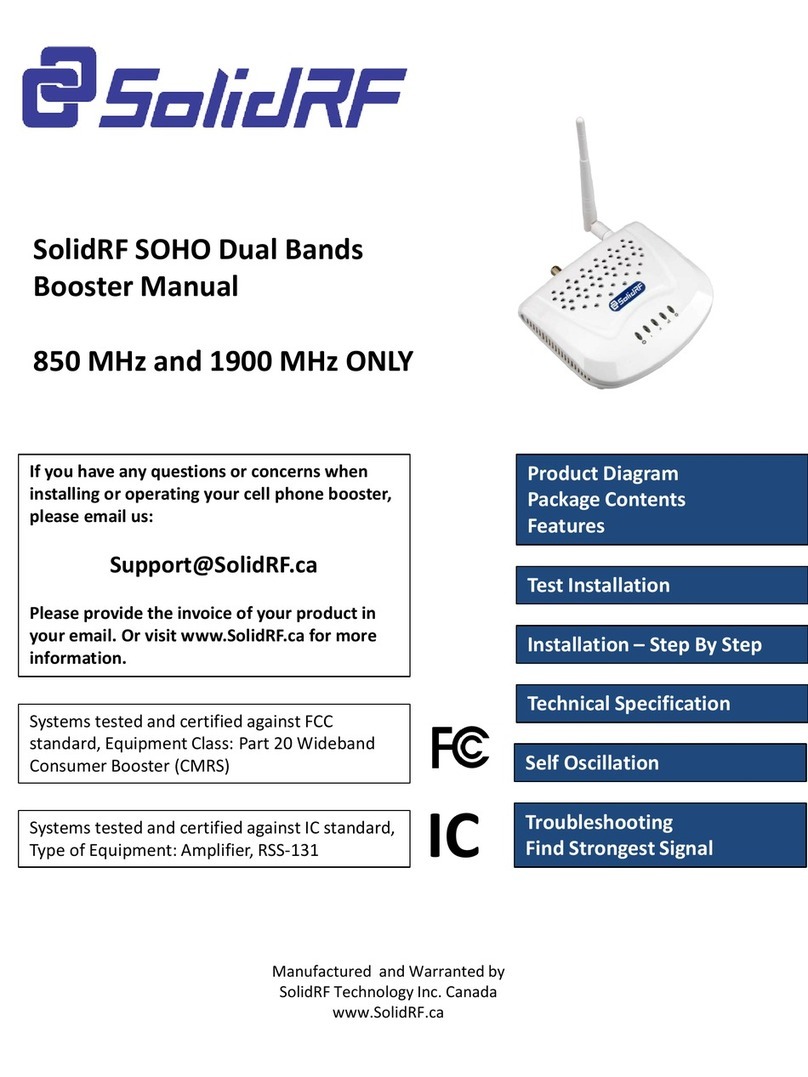
SolidRF
SolidRF SOHO User manual
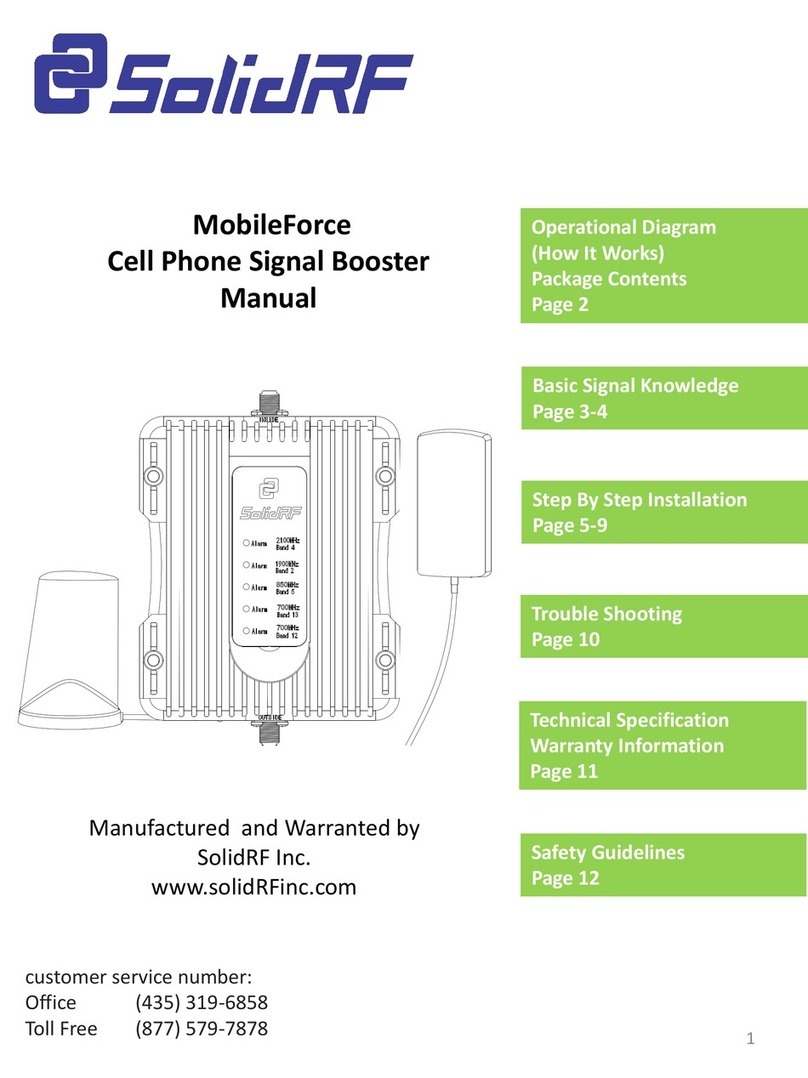
SolidRF
SolidRF MobileForce User manual
